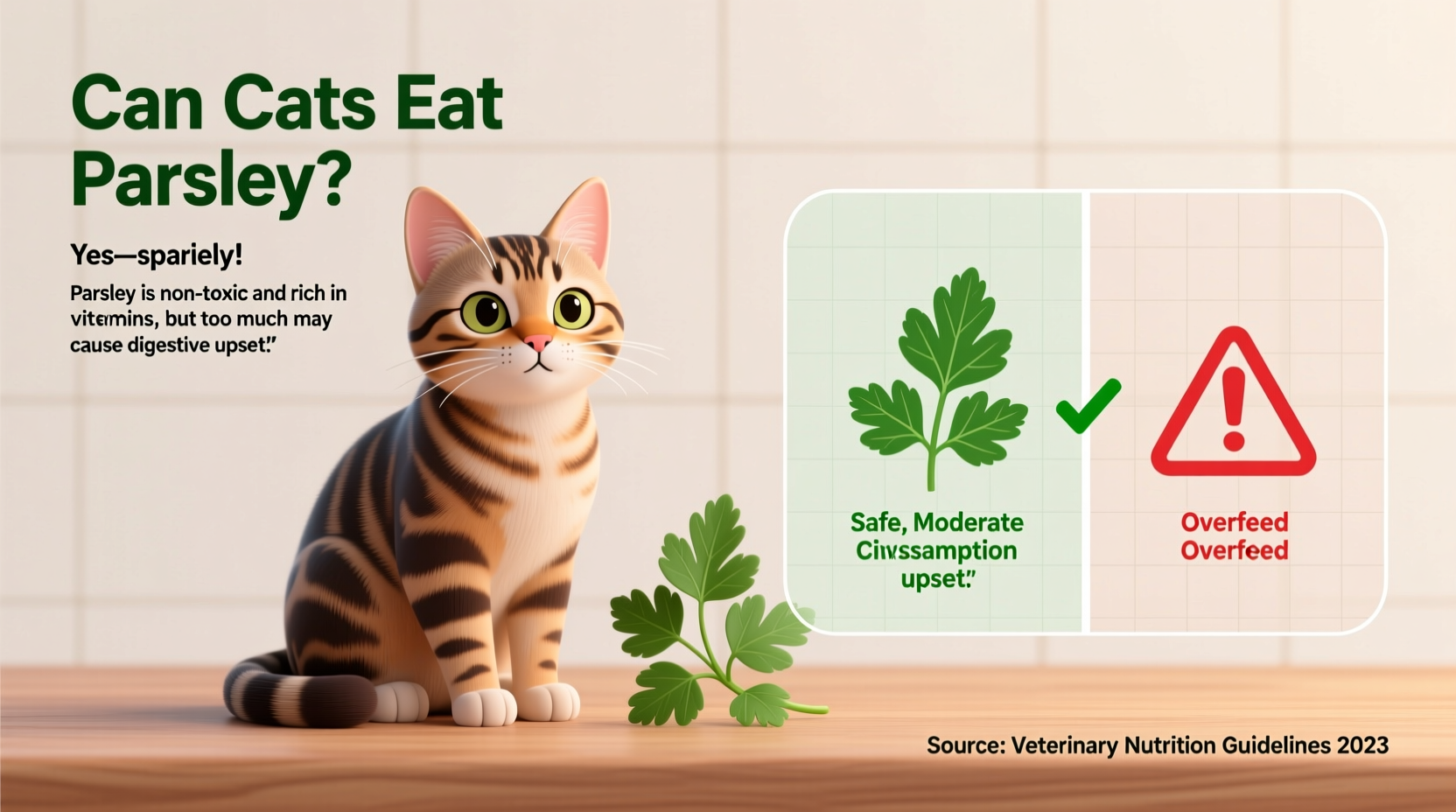As a cat owner, you've probably noticed your feline friend showing interest in your herb garden. That curious nibble on your parsley plant isn't unusual—but is it safe? Let's cut through the confusion with science-backed guidance you can trust.
Understanding Parsley's Role in Feline Nutrition
Cats are obligate carnivores, meaning their primary nutritional needs come from animal protein. However, occasional plant matter like parsley can offer supplementary benefits when given responsibly. The ASPCA confirms parsley (Petroselinum crispum) is non-toxic to cats, making it one of the safer herbs for feline exploration.
Historically, cats in the wild would consume small amounts of grasses and herbs while hunting. Modern domestic cats retain this instinct, often seeking out green plants. While not essential to their diet, modest parsley consumption aligns with their natural foraging behaviors.
Parsley Benefits vs. Risks: What Research Shows
Parsley contains vitamins A, C, and K that support feline health in trace amounts. Its chlorophyll content may help freshen breath, while the fiber can aid digestion when given sparingly. However, these benefits only apply to fresh, plain parsley—never cooked with seasonings or oils.
| Safe Consumption Guidelines | Unsafe Practices to Avoid |
|---|---|
| 1-2 small sprigs (¼ teaspoon chopped) once weekly | Daily feeding or large quantities |
| Fresh, thoroughly washed parsley only | Cooked parsley with added ingredients |
| Plain flat-leaf or curly varieties | Italian parsley in supplement form |
| Monitor for 24 hours after first serving | Ignoring vomiting or diarrhea symptoms |
The primary concern with parsley is its oxalate content, which in excessive amounts could contribute to urinary issues in predisposed cats. A 2022 study published in the Journal of Feline Medicine and Surgery noted that occasional small servings pose minimal risk, but cautioned against regular consumption for cats with kidney or urinary tract conditions.
Practical Feeding Protocol: Step-by-Step
Follow this vet-recommended approach when introducing parsley:
- Start with microscopic amounts – Offer one small leaf fragment
- Observe for 24 hours – Watch for vomiting, diarrhea, or lethargy
- Gradually increase – Only if no adverse reactions occur
- Limit frequency – Maximum once weekly as a treat
- Always wash thoroughly – Remove pesticides and contaminants
Many cat owners successfully grow cat-safe parsley in small pots specifically for their pets. This controlled environment ensures the herb is free from garden chemicals and provides mental stimulation through natural foraging behavior.

When to Avoid Parsley Completely
Certain health conditions require complete avoidance of parsley:
- Cats with kidney disease or urinary crystals
- Felines on blood-thinning medications (parsley's vitamin K affects clotting)
- Kittens under six months (delicate digestive systems)
- Cats with known herb sensitivities
The American Veterinary Medical Association emphasizes that herbs should never exceed 1% of a cat's daily food intake. For most adult cats, this translates to no more than ¼ teaspoon of chopped parsley weekly.
Better Herb Alternatives for Cats
If your cat shows strong interest in greens, consider these safer alternatives:
- Cat grass (wheatgrass or oat grass) – Specifically grown for felines
- Valerian root – Natural cat attractant with calming properties
- Mint varieties – Catnip, cat thyme, or lemon balm
These options provide similar sensory stimulation without parsley's oxalate concerns. Always introduce new plants gradually while monitoring your cat's response.
When to Contact Your Veterinarian
Seek professional advice if your cat consumes:
- More than 1 tablespoon of parsley at once
- Parsley treated with pesticides or fertilizers
- Any amount if showing pre-existing urinary issues
Immediate veterinary attention is needed for persistent vomiting, bloody urine, or lethargy following parsley consumption. These symptoms could indicate more serious complications requiring professional intervention.
Final Recommendations
Parsley can be a safe, occasional treat for healthy adult cats when served in strict moderation. Remember that commercial cat foods are formulated to provide complete nutrition—herbs should never replace balanced meals. When in doubt about any human food for your cat, consult your veterinarian before offering it.











 浙公网安备
33010002000092号
浙公网安备
33010002000092号 浙B2-20120091-4
浙B2-20120091-4